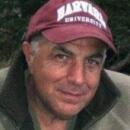Thoughts from Dr. Joe: Being part of all there is
If you read the contents of this space last week, you’ll remember my students and I were heading to the Rocky Mountains to learn about history, Indian mythology, themselves, and how to survive on the land.
Our mission was to live off the land in a primitive world that would hone our wits, where the forces of nature would trim us of emotional and physical fat. It would be a chance for self-discovery; my students would learn who they were — and who they were not.
Wilderness is a place; so we took our first steps into the wild. The spirituality of the mountains is made richer by the knowledge that the landscape has a human history going back 10,000 years. Ancient people traveled along the same paths. Human history gives the magic to the landscape. Time stops in these mountains and as we forage beneath the canopy of ancient cedar, our point of reference is the same for us as it was for the Anasazi, the ancient ones. I told my students, “Understand that, and you touch the enchantment in enchantment.”
This is the 30th year of our Rocky Mountain adventures, and we’ve come full circle. La Cañada residents Brett Miketta and Lynette Kallik met on the trip 25 years ago. Their children, Robin Miketta (currently Miss La Cañada Flintridge) and Graham, represent the second generation of Rocky Mountain adventurers. Although Robin is our city’s royalty, she has earned her spurs as a gutsy backpacker and was undaunted in rain, mud and icy river crossings.
Throughout our sojourn in the wilderness we were pelted by rain, hail and heavy winds. Our spirits would not dampen. Typically, the Southwest monsoon would pass in late afternoon, rewarding us with brilliant skies dotted with magnificent cumulus clouds.
Our final hike was an arduous climb out of the Hermosa Creek river canyon. “I will see you at the top for lunch,” I said, before taking my first step. I watched my students crest the summit. Their faces showed the exhilaration of what they had accomplished and their eyes reflected John Muir’s timeless saying, “Who wouldn’t be a mountaineer?”
It is essential for a healthy spirit to experience trails that challenge our strength and courage. I, on the other hand, learned that I’m not as good as I once was.
Why do we do it? Why do we embrace rain, hail, altitude, arduous trails and freezing temperatures? Does it teach us anything? Do we learn determination, patience, invention, accuracy, tolerance and strength? Do we learn to rely on ourselves and realize that we are not small? We fill the sphere. We are part of all there is.
During one of the downpours, I was helping former 7th Calvary Sgt. Isaac Pedraza struggle to maintain the fire. He looked at me, soaked and shivering, and said, “Lieutenant, I love this!” I knew what he meant and replied, “Ohraah, Sarge.”
I told my students that the arduous roads we travel build our character. They fared very well, and from this point, they knew they had the right stuff. Learning is experiential, and some of our classrooms aren’t classrooms.
Knowledge, especially of self, evolves from different venues. Diversity defines our character. There is more to wilderness than meets the eye, more than timber and rock. There are mental trees and rocks, an imaginative world of origins, meanings and mysteries called mythology. When we connect to the earth, we touch that which is deepest within us. We are genetically linked to ancestors who were voyagers in a primitive world, just like we are on this New Mexico adventure.
I’ll be back next week with part three.
JOE PUGLIA is a practicing counselor, a professor of education at Glendale Community College and a former officer in the Marines. Reach him at doctorjoe@ymail.com.
